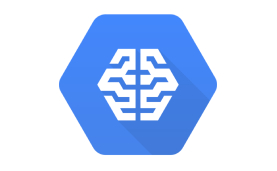Use AI Platform to train your machine learning models at scale, to host your trained model in the cloud, and to use your model to make predictions about new data.
The diagram below gives a high-level overview of the stages in an ML workflow. The blue-filled boxes indicate where AI Platform provides managed services and APIs:
As the diagram indicates, you can use AI Platform to manage the following stages in the ML workflow:
This section describes the pieces that make up AI Platform and the primary purpose of each piece.
The AI Platform training service allows you to train models using a wide range of different customization options.
You can select many different machine types to power your training jobs, enable distributed training, use hyperparameter tuning, and accelerate with GPUs and TPUs.
You can also select different ways to customize your training application. You can submit your input data for AI Platform to train using a built-in algorithm (beta). If the built-in algorithms do not fit your use case, you can submit your own training application to run on AI Platform, or build a custom containerwith your training application and its dependencies to run on AI Platform.
The AI Platform prediction service allows you to serve predictions based on a trained model, whether or not the model was trained on AI Platform.
AI Platform Data Labeling Service (beta)lets you request human labeling for a dataset that you plan to use to train a custom machine learning model. You can submit a request to label your video, image, or text data.
To submit a labeling request, you provide a representative sample of labeled data, specify all the possible labels for your dataset, and provide some instructions for how to apply those labels. The human labelers follow your instructions, and when the labeling request is complete, you get your annotated dataset that you can use to train a machine learning model.
This section describes the tools that you use to interact with AI Platform.
You can deploy models to the cloud and manage your models, versions, and jobs on the Cloud console. This option gives you a user interface for working with your machine learning resources. As part of Google Cloud, your AI Platform resources are connected to useful tools like Cloud Logging and Cloud Monitoring.
You can manage your models and versions, submit jobs, and accomplish other AI Platform tasks at the command line with the gcloud ai-platform command-line tool.
We recommend gcloud commands for most AI Platform tasks, and the REST API (see below) for online predictions.
The AI Platform REST APIprovides RESTful services for managing jobs, models, and versions, and for making predictions with hosted models on Google Cloud.
You can use the Google API Client Library for Pythonto access the APIs. When using the client library, you use Python representations of the resources and objects used by the API. This is easier and requires less code than working directly with HTTP requests.
We recommend the REST API for serving online predictions in particular.
Vertex AI Workbench user-managed notebooks instances let you create and manage virtual machine (VM) instances that are prepackaged with JupyterLab.
User-managed notebooks instances have a preinstalled suite of deep learning packages, including support for the TensorFlow and PyTorch frameworks. You can configure either CPU-only or GPU-enabled instances.
Information Source: https://cloud.google.com/ai-platform/docs/technical-overview
Your user-managed notebooks instances are protected by Google Cloud authentication and authorization and are available by using a user-managed notebooks instance URL. User-managed notebooks instances also integrate with GitHuband can sync with a GitHub repository.
To learn more, see the user-managed notebooks documentation.
Deep Learning VM Images is a set of virtual machine images optimized for data science and machine learning tasks. All images come with key ML frameworks and tools pre-installed. You can use them out of the box on instances with GPUs to accelerate your data processing tasks.
Deep Learning VM images are available to support many combinations of framework and processor. There are currently images supporting TensorFlow Enterprise, TensorFlow, PyTorch, and generic high-performance computing, with versions for both CPU-only and GPU-enabled workflows.
